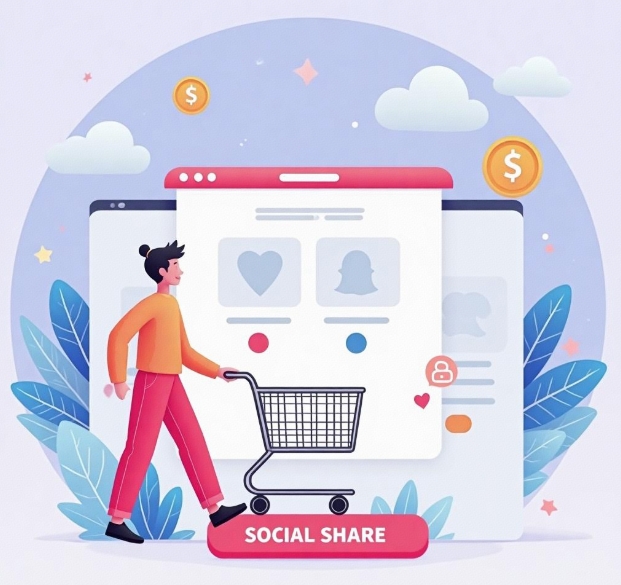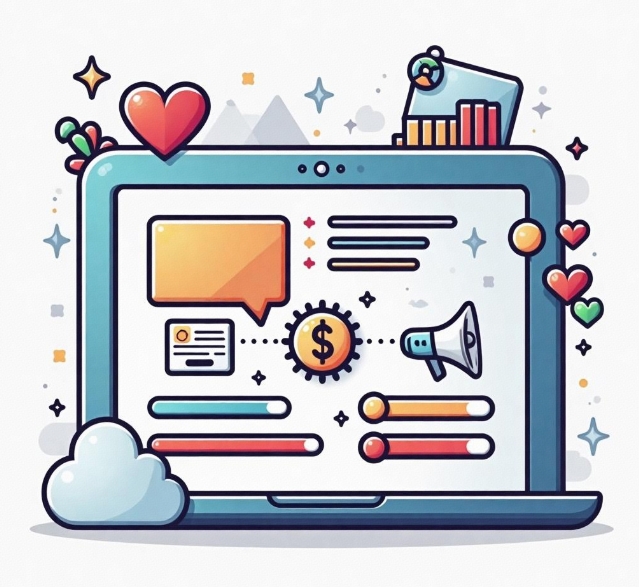Points Mall and Social Fission: How to Use Social Gameplay to Boost User Engagement?
- latest articles
- 1.DApp Development & Customization: Merging Diverse Market Needs with User Experience 2.Analysis of the Core Technical System in DApp Project Development 3.How to achieve cross-chain interoperability in Web3 projects? 4.How does the tokenization of points reconstruct the e-commerce ecosystem? 5.How to Set and Track Data Metrics for a Points Mall? 6.What is DApp Development? Core Concepts and Technical Analysis 7.Inventory of commonly used Web3 development tools and usage tips 8.Development of a Distribution System Integrated with Social E-commerce 9.Six Key Steps for Businesses to Build a Points Mall System 10.What is DApp Development? A Comprehensive Guide from Concept to Implementation
- Popular Articles
- 1.Future Trends and Technology Predictions for APP Development in 2025 2.Analysis of the DeFi Ecosystem: How Developers Can Participate in Decentralized Finance Innovation 3.From Zero to One: How PI Mall Revolutionizes the Traditional E-commerce Model 4.DAPP Development | Best Practices for Professional Customization and Rapid Launch 5.Recommended by the Web3 developer community: the most noteworthy forums and resources 6.How to Develop a Successful Douyin Mini Program: Technical Architecture and Best Practices 7.From Cloud Computing to Computing Power Leasing: Building a Flexible and Scalable Computing Resource Platform 8.Shared Bike System APP: The Convenient Choice in the Era of Smart Travel 9.How to Create a Successful Dating App: From Needs Analysis to User Experience Design 10.From Design to Development: The Complete Process of Bringing an APP Idea to Life
In today's digital era, e-commerce platforms and online service platforms are fiercely competitive, and user acquisition and activity have become key factors for platform development. To attract more users and enhance user activity, major platforms have launched points malls and social fission strategies. These strategies not only enhance user participation and loyalty but also rapidly expand the platform's influence and user base through social propagation mechanisms. This article will delve into how to enhance user activity by combining points malls with social fission, analyzing the underlying strategies and implementation methods.
I. Basic Concepts and Functions of Points Malls
A points mall refers to a marketing model where platforms incentivize users to make purchases, participate in activities, etc., through a points system, allowing users to exchange points for goods or services. The core advantage of points malls lies in stimulating user participation enthusiasm through reward mechanisms, thereby enhancing user activity, purchase frequency, and platform user stickiness.
1.1 Ways to Earn Points
Users can earn points through various methods, common ones include:
Shopping Rewards: Each time a user makes a purchase, the platform awards a certain number of points based on the purchase amount or product category.
Check-in Rewards: Users earn points by logging into the platform daily and completing check-ins.
Task Incentives: Earn points by completing specified tasks (such as sharing, reviewing, inviting friends, etc.).
Activity Participation: Users earn points by participating in promotions, holiday events, etc., held by the platform.
1.2 Functions of Points Malls
The functions of points malls are not only to provide a channel for material rewards but also to enhance user loyalty and increase platform activity:
Increase User Engagement: Points rewards give users returns for every action on the platform, stimulating their participation enthusiasm.
Increase Repurchase Rate: Encourage frequent consumption through the points system, enhancing the user repurchase rate.
Enhance Platform Stickiness: Points malls create user dependency on the platform, increasing user dwell time and activity.
II. Basic Concepts and Functions of Social Fission
Social fission refers to exponential growth in user numbers through social network propagation, leveraging social relationship chains. In the social fission model, platforms design simple, easily shareable interactive strategies that enable users to spread information on social platforms, attracting more new users and creating a viral propagation effect.
2.1 Key Elements of Social Fission
The implementation of social fission relies on several key elements:
Sharing Rewards: Platforms encourage users to share content or invite friends to register, offering certain rewards such as points, coupons, cash, etc.
Social Propagation: Users spread platform information through sharing links, inviting friends, etc., to channels like friend circles, WeChat groups, and social media.
Fission Chain: Each user's social fission behavior attracts more potential users to join, forming a fission chain and achieving rapid user growth.
2.2 Functions of Social Fission
The main functions of social fission are reflected in the following aspects:
Rapid User Growth: Through social fission, platforms can achieve low-cost, rapid acquisition of large numbers of new users.
Enhance Brand Exposure: Users sharing information via social media can expand the platform's brand exposure and strengthen brand influence.
Increase User Activity: Social fission not only attracts new users but also incentivizes existing users to participate actively through reward mechanisms, thereby improving overall platform activity.
III. Combining Points Malls with Social Fission
Combining points malls with social fission strategies can fully leverage the advantages of both to enhance user activity. Points malls guide users to participate in platform activities, while social fission expands the platform's user base, forming a virtuous cycle. Specifically, it can be approached from the following aspects:
3.1 Designing Social Fission Tasks
Platforms can design attractive social fission tasks to encourage users to share on social media or invite friends to register. Specific task designs can include:
Invite Friends to Earn Points: Users earn points by inviting friends to register on the platform and complete specified tasks (such as making a first purchase, checking in, etc.). Such tasks effectively attract new users and increase the participation enthusiasm of existing users.
Share Products to Earn Points: Users share product links in the points mall and earn a certain number of points upon successful sharing. This not only boosts users' willingness to share but also achieves platform brand exposure through users' social networks.
3.2 Setting Linkage Rules Between Points Malls and Social Fission
To better integrate points malls with social fission, platforms can set linkage rules that allow users to earn more points when engaging in social fission. For example:
Social Task Bonuses: Users completing social fission tasks (such as sharing products, inviting friends to register, etc.) can earn more points. For instance, successfully inviting 3 friends to register may yield higher rewards than regular points mall tasks.
Fission Reward Tiers: Design different fission reward tiers to encourage users to expand their social networks and unlock more rewards. For example, each friend invited to register and complete a first purchase earns the user corresponding points, with higher-tier rewards unlocked as the number of invited friends increases.
3.3 Adding Interactive and Social Elements
Beyond simple points rewards, platforms can add more interactive and social elements to enhance user engagement. For example:
Social Leaderboards: Display users' social fission achievements (such as number of friends invited, sharing success rate, etc.) to encourage competition for more rewards.
Social Challenges: Launch time-limited social fission challenges, such as "Top 100 users with the most invited friends win big prizes," motivating users to actively participate in social fission through competition.
3.4 Creating a Socialized Points Mall
Incorporate social elements into the points mall, allowing users not only to redeem material rewards but also to engage in social interactions on the platform. For example:
User Reviews and Sharing: Encourage users to review products in the points mall and earn points through social sharing.
Friend Recommendation System: Users can recommend products to friends and earn points upon successful recommendations. This not only boosts product sales but also promotes social fission.
IV. Case Studies: Successful Applications of Points Malls and Social Fission
4.1 JD.com's "JD Membership" System
JD.com enhanced platform activity by combining points malls with social fission. The JD Membership system not only provides users with ways to earn points but also promotes social fission through inviting friends and sharing coupons. This approach not only increased member activity but also significantly boosted user shopping frequency.
4.2 Meituan's "Share to Get Red Packets" Strategy
Meituan successfully implemented social fission through its "Share to Get Red Packets" campaign. Users inviting friends to join Meituan and complete orders receive red packet rewards for both parties. This not only stimulated user participation enthusiasm but also expanded the platform's user base and brand exposure through social fission.
V. Conclusion
Points malls and social fission hold great potential for enhancing user activity. Through reasonable points reward mechanisms and social fission task designs, platforms can effectively stimulate user participation enthusiasm, improving platform activity and user loyalty. Meanwhile, social fission can not only quickly attract new users but also drive brand exposure through social propagation. In the future, platforms should focus more on combining points malls with social fission to create more innovative and engaging user interaction experiences, thereby standing out in the competitive market.
-

How does the tokenization of points reconstruct the e-commerce ecosystem?
With the continuous advancement of internet technology and the gradual prolifera···
-

How to Set and Track Data Metrics for a Points Mall?
With the rapid development of the e-commerce industry, points malls, as a common···
-

Development of a Distribution System Integrated with Social E-commerce
With the rapid development of internet technology, the e-commerce industry has e···

 Blockchain
Blockchain












